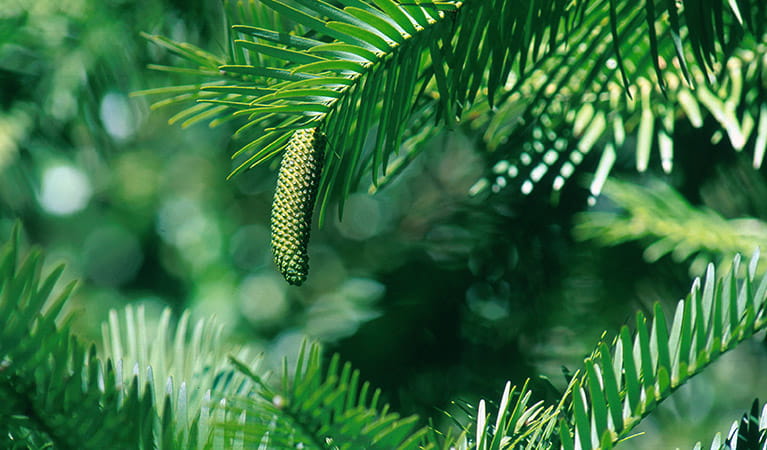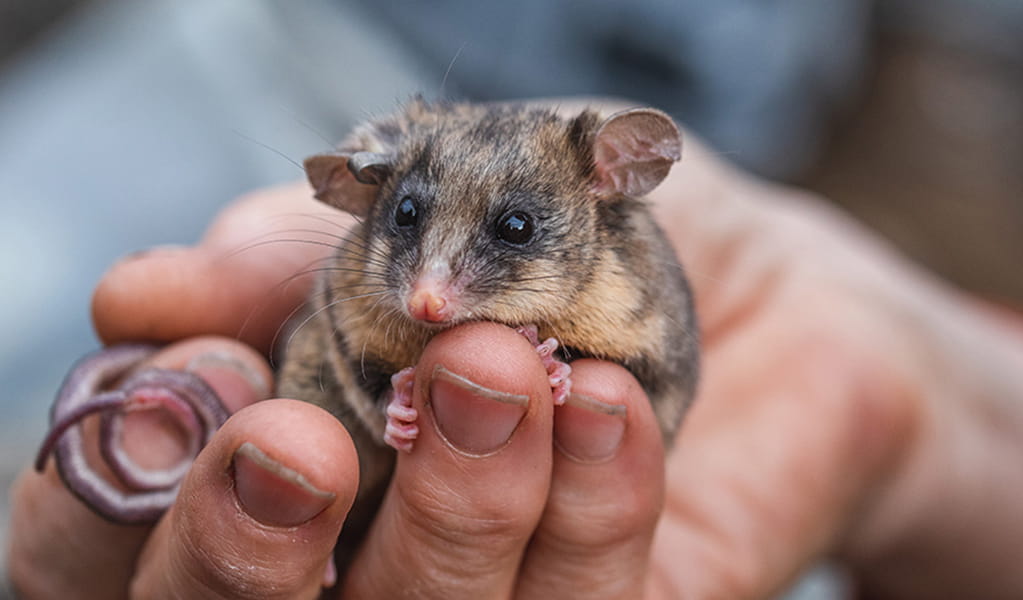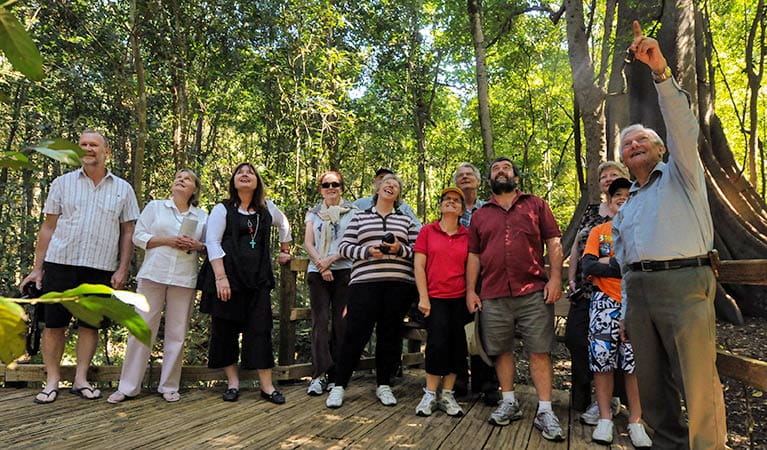Get a glimpse into the world of threatened grey-headed flying-foxes at Wingham Brush Nature Reserve. Watch our bat cam live stream any time from dawn to dusk.
Connect with nature from home
Grey-headed flying-foxes are a vulnerable species in NSW. This live stream web cam lets you learn more about this misunderstood mammal without leaving home. By day, flying-foxes roost in permanent and semi-permanent camps. At dusk they fly out to forage.
When to tune in
The stream is live from dawn to dusk (AEST) every day. You can see flying-foxes roosting throughout the day. To watch them fly out en masse, time your visit with dusk. At dawn, they may return to Wingham Brush or find themselves at another roost.
No me, no tree
Guided by excellent night vision and sense of smell, grey-headed flying-foxes forage up to 50km from their roost. Because they travel so far, they can carry pollen further than other pollinators, and disperse larger seeds. This makes them vital to the health and regeneration of our remaining native forest along the east coast, especially after bushfires.
Look out for
Regular ‘bat camp’ roosting behaviour during the day includes social squabbling and alertness. Look carefully and you might spot individuals wing flapping to cool themselves.
Special locking mechanisms in their legs allow them to hang upside down easily. They simply let go to take flight by dropping from a height. Flying-foxes will invert themselves when they urinate or poo, swapping their usual upside-down pose to instead hang by their thumbs.
Mating typically occurs between February and May. You’re likely to see pups nursing and clinging to their mothers from October to May.
Wingham Brush also attracts black flying-foxes and occasionally little red flying-foxes.
Gallery
Not much activity at the moment? View our gallery for examples of what to look out for and when you might see it.
About this roost
The grey-headed flying-fox camp at Wingham Brush Nature Reserve is considered permanent. It’s rare that this roost site has been empty. The size of the colony at any time ranges from around 4000 to 90,000 individuals.
This live stream will help rangers, scientists and researchers monitor and understand what’s changing and what we can do to protect this colony – without disturbing them. It also gives people greater understanding and appreciation of these intelligent, social animals, and a chance to learn about places they can't visit.
Under threat
While you might see thousands of flying-foxes at roost, they continually move in response to food availability. This creates the illusion that they always occur in large numbers. In fact, grey-headed flying-fox numbers are declining.
Habitat loss is the greatest threat to the grey-headed flying-fox. Land clearing, urbanisation and extreme climate events all contribute to natural habitat decline. As a result of habitat loss and reduced natural food sources, flying-foxes are increasingly roosting in urban areas. This brings the species into contention with communities.
Changes in climate also increases risk of food shortages, bushfires and heatwaves, which can cause mass deaths.
Wingham Brush Nature Reserve has been declared an Asset in Intergenerational Significance (AIS), giving it strengthened protections to safeguard the future of these remarkable animals and their vital habitat.
Support our wildlife
Now more than ever our native wildlife needs our support. Here’s how you can help:
- Share this live stream with your friends and family
- Learn more about the grey-headed flying-fox
- Help monitor flying-fox roosts and populations
Please note this is not a curated feed. You’re watching grey-headed flying-foxes in their natural habitat, and you may see some other species too.










